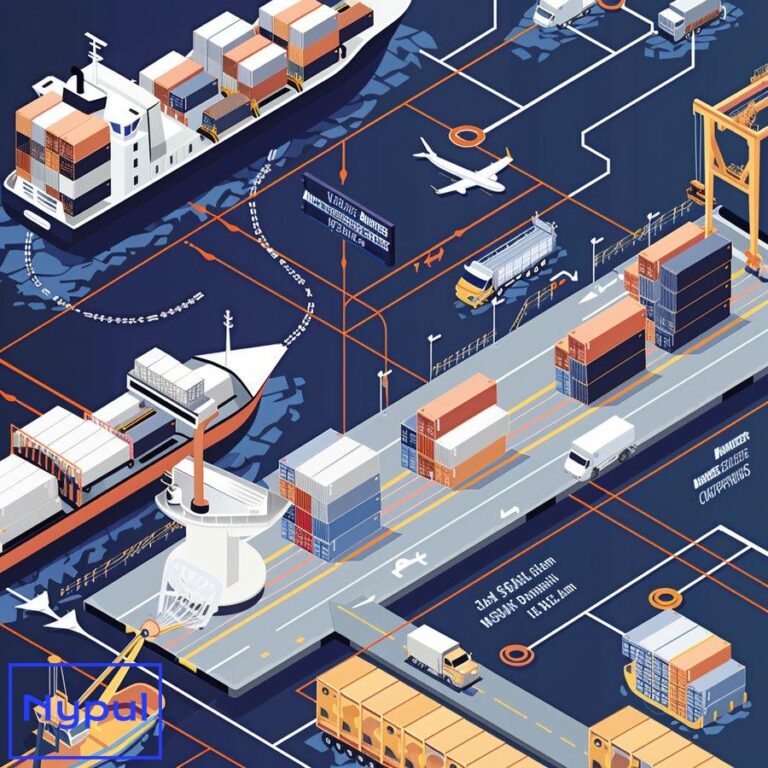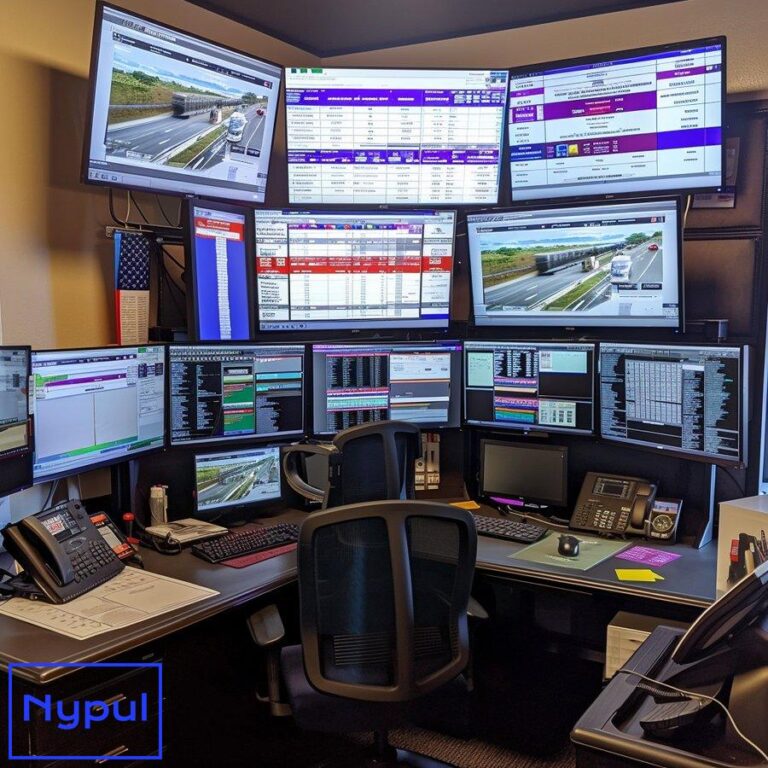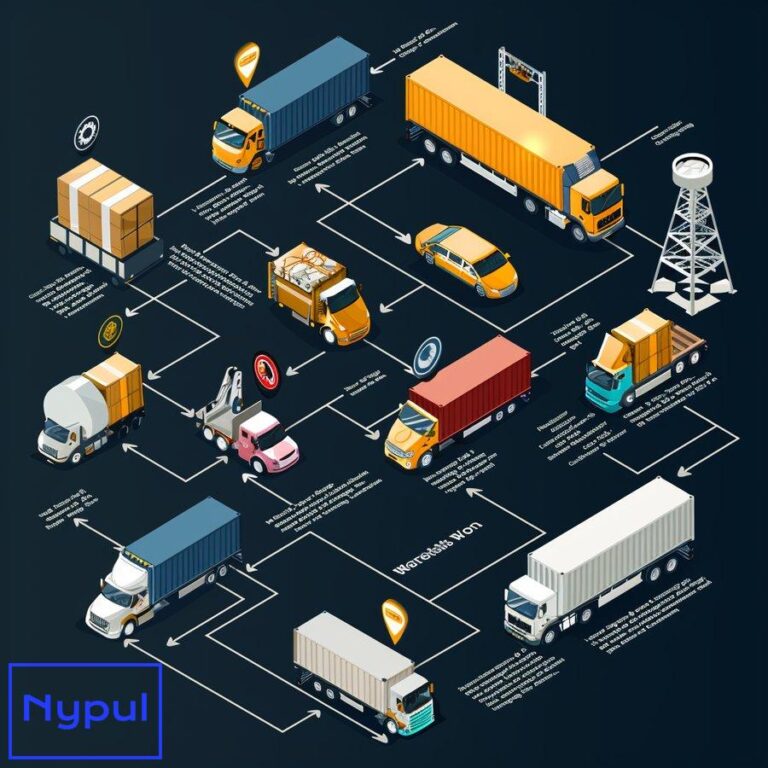Which Mode of Transportation Is Best for Large and Bulky Cargo
What defines large and bulky cargo?
Large and bulky cargo, often referred to as oversized or out-of-gauge freight, encompasses a wide range of items that exceed standard shipping dimensions or weight limits. These shipments pose unique challenges in transportation and handling, requiring specialized equipment and careful planning.
Dimensional criteria
The classification of cargo as large or bulky typically depends on its dimensions relative to standard shipping containers or trailers. For containerized shipping, any item that exceeds the internal dimensions of a standard 40-foot high cube container (39’5″ L x 7’8″ W x 8’9″ H) is considered oversized. In road transport, cargo exceeding 8.5 feet in width, 13.5 feet in height, or 53 feet in length generally falls into the large and bulky category.
Weight considerations
Weight is another crucial factor in defining large and bulky cargo. Most standard shipping methods have weight limits ranging from 44,000 to 59,000 pounds (20-27 metric tons) for a full truckload. Any shipment exceeding these limits is classified as overweight and requires special handling.
Industry-specific examples
Various industries regularly deal with large and bulky cargo:
Construction and infrastructure: Heavy machinery, prefabricated building components, and wind turbine blades are common examples of oversized freight in this sector.
Manufacturing: Industrial equipment, large tanks, and oversized machinery parts often require specialized transportation solutions.
Energy sector: Oil and gas equipment, power plant components, and renewable energy infrastructure frequently fall into the large and bulky category.
Aerospace: Aircraft components, satellites, and rocket parts are prime examples of oversized cargo in this high-tech industry.
Legal and regulatory aspects
The definition of large and bulky cargo also has legal implications. Many jurisdictions have specific regulations governing the transportation of oversized loads, including permit requirements, escort vehicles, and route restrictions. These regulations aim to ensure road safety and protect infrastructure from potential damage caused by exceptionally large or heavy loads.
Handling and safety considerations
Large and bulky cargo often requires specialized handling equipment and procedures. This may include:
Custom lifting gear: Cranes, gantries, and specialized forklifts designed to handle oversized items safely.
Securing mechanisms: Enhanced strapping, chains, and custom-designed cradles to prevent shifting during transit.
Risk assessment: Comprehensive evaluation of potential hazards associated with moving unusually large or heavy items.
Understanding the definition and characteristics of large and bulky cargo is essential for shippers, carriers, and logistics professionals. It enables them to plan effectively, comply with regulations, and ensure the safe and efficient transportation of these challenging shipments.
How do different transportation modes handle oversized freight?
The transportation of oversized freight requires careful consideration of various modes, each with its unique capabilities and limitations. Understanding how different transportation methods handle large and bulky cargo is crucial for selecting the most appropriate and cost-effective solution.
Road transport
Road transport is often the first choice for moving oversized cargo, especially for shorter distances or as part of a multimodal solution.
Specialized trailers: Flatbed trailers, lowboys, and extendable trailers are commonly used for large loads. These trailers can accommodate items of various shapes and sizes, with some capable of carrying weights up to 150 tons.
Permit requirements: Oversized loads typically require special permits, which may vary by state or country. These permits often dictate specific routes, travel times, and escort vehicle requirements.
Advantages: Flexibility in routing, door-to-door service, and the ability to reach remote locations.
Limitations: Weight and dimension restrictions imposed by road infrastructure, bridges, and tunnels. Long-distance transport can be time-consuming and expensive for very large items.
Rail transport
Rail transport offers a viable option for moving large and heavy cargo over long distances.
Specialized railcars: Flatcars, well cars, and heavy-duty cars are designed to handle oversized loads. Some railcars can carry weights exceeding 300 tons.
Clearance considerations: Railway routes must be carefully planned to ensure adequate clearance through tunnels, bridges, and other structures.
Advantages: Cost-effective for long-distance transport, ability to move very heavy loads, and lower environmental impact compared to road transport.
Limitations: Limited flexibility in routing, potential for transloading at origin and destination, and dependency on existing rail infrastructure.
Maritime transport
Sea freight is often the preferred method for international shipments of large and bulky cargo.
Vessel types: Roll-on/roll-off (RoRo) ships, heavy lift vessels, and project cargo ships are specifically designed to handle oversized freight.
Port infrastructure: Specialized ports with heavy-lift cranes and sufficient draft are essential for handling large cargo.
Advantages: Ability to transport extremely large and heavy items, cost-effective for long-distance international shipments.
Limitations: Longer transit times, potential for weather-related delays, and the need for specialized port facilities.
Air freight
While less common for truly oversized cargo, air transport can be used for time-sensitive or high-value large items.
Specialized aircraft: Cargo planes like the Antonov An-225 Mriya and Boeing 747 Dreamlifter are designed to carry oversized loads.
Airport capabilities: Not all airports can handle oversized air cargo, limiting options for origin and destination.
Advantages: Fastest transit times, especially for intercontinental shipments, and ability to reach remote locations.
Limitations: High cost, strict weight and dimension limitations, and limited availability of specialized aircraft.
Inland waterways
Rivers and canals can provide an alternative route for moving large cargo in certain regions.
Barge transport: Specially designed barges can carry extremely heavy and bulky items, sometimes exceeding the capacity of road or rail transport.
Infrastructure considerations: Locks, bridges, and water depth can limit the size of cargo that can be transported.
Advantages: Cost-effective for bulk shipments, ability to move very large items, and lower environmental impact.
Limitations: Limited to areas with suitable waterway infrastructure, potential for seasonal variations in water levels.
Comparison of transportation modes for oversized freight
| Transport Mode | Max Weight Capacity | Flexibility | Cost-effectiveness | Transit Time | Environmental Impact |
|---|---|---|---|---|---|
| Road | Up to 150 tons | High | Medium | Medium | Medium |
| Rail | 300+ tons | Low | High | Medium | Low |
| Maritime | 1000+ tons | Medium | High | Slow | Low |
| Air | Up to 250 tons | Medium | Low | Fast | High |
| Inland Waterways | 500+ tons | Low | High | Slow | Low |
The choice of transportation mode for oversized freight depends on various factors, including the cargo’s dimensions and weight, origin and destination, time constraints, and budget. Often, a combination of these modes is used to create the most efficient and cost-effective solution for moving large and bulky cargo.
Which factors are crucial when selecting a transport method for large cargo?

Selecting the appropriate transport method for large cargo is a complex decision that requires careful consideration of multiple factors. The right choice can significantly impact the efficiency, cost-effectiveness, and safety of the shipment. Here are the crucial factors to consider when choosing a transport method for oversized freight:
Cargo characteristics
The physical attributes of the cargo play a primary role in determining the suitable transport method.
Dimensions: The length, width, and height of the cargo will dictate which modes of transport and specific vehicles or vessels can accommodate it.
Weight: The total weight and weight distribution of the cargo affect the choice of transport equipment and route planning.
Fragility: Delicate or sensitive cargo may require specialized handling and packaging, influencing the transport method selection.
Value: High-value items might necessitate faster or more secure transport options, potentially justifying higher shipping costs.
Origin and destination
The locations involved in the shipment significantly impact the choice of transport method.
Infrastructure availability: The presence of suitable roads, railways, ports, or airports at both the origin and destination is crucial.
Accessibility: Some remote locations may only be reachable by certain modes of transport, limiting the available options.
Distance: Longer distances may favor rail or sea transport for cost-effectiveness, while shorter distances might be more suitable for road transport.
Time constraints
The urgency of the shipment is a critical factor in selecting the transport method.
Delivery deadlines: Tight schedules may necessitate faster modes of transport, such as air freight or expedited road services.
Production schedules: Just-in-time manufacturing requirements can influence the choice of transport to ensure timely delivery.
Seasonal considerations: Weather patterns or seasonal restrictions on certain routes may affect timing and mode selection.
Cost considerations
Budget constraints and overall cost-effectiveness are key factors in transport method selection.
Direct transport costs: This includes the base price for the chosen mode of transport, including vehicle or vessel hire, fuel, and labor.
Indirect costs: Consider expenses such as packaging, handling, storage, and potential transloading between different modes.
Insurance: The cost of insuring high-value or high-risk cargo can vary significantly between transport methods.
Customs and duties: International shipments may incur different fees depending on the chosen transport method and route.
Regulatory compliance
Adherence to legal requirements and industry standards is essential when moving large cargo.
Permits and licenses: Different transport methods may require specific permits, especially for oversized or overweight loads.
Environmental regulations: Emission standards and environmental zones in certain areas may restrict the use of some transport modes.
Safety regulations: Compliance with safety standards for securing and transporting large cargo is crucial across all modes.
Risk assessment
Evaluating potential risks associated with different transport methods is vital for ensuring successful shipment.
Safety record: Consider the safety statistics of different transport modes and specific carriers.
Security concerns: Assess the risk of theft, damage, or loss associated with each transport method.
Environmental factors: Evaluate the potential impact of weather conditions, natural disasters, or geopolitical issues on different routes and modes.
Handling requirements
The specific needs for loading, unloading, and in-transit handling of the cargo influence the transport method choice.
Equipment availability: Ensure that the necessary cranes, forklifts, or specialized loading gear are available at key points in the journey.
Expertise: Consider the level of skill and experience required to handle the specific type of large cargo safely.
Packaging and securing: Different transport modes may have varying requirements for how cargo is packaged and secured during transit.
Multimodal potential
The ability to combine different transport modes can often provide the most efficient solution for large cargo.
Intermodal compatibility: Assess how easily the cargo can be transferred between different modes of transport.
Total transit time: Calculate the overall journey time, including any transloading or mode changes.
Cost-effectiveness: Compare the costs of single-mode versus multimodal transport options.
Environmental impact
Increasingly, the environmental footprint of transport choices is becoming a crucial factor for many shippers.
Carbon emissions: Compare the CO2 emissions of different transport modes, considering the entire journey.
Fuel efficiency: Assess the energy efficiency of various transport options, especially for long-distance shipments.
Sustainable practices: Consider carriers and modes that employ eco-friendly technologies or practices.
By carefully evaluating these factors, shippers can make informed decisions about the most appropriate transport method for their large cargo. The optimal choice often involves balancing multiple considerations to find a solution that meets the specific needs of the shipment while adhering to budgetary constraints and regulatory requirements.
What specialized equipment is essential for moving bulky items?

Moving bulky items requires a range of specialized equipment designed to handle the unique challenges posed by oversized and heavy cargo. This equipment is crucial for ensuring safe, efficient, and damage-free transportation of large items across various modes of transport. Here’s an overview of the essential specialized equipment used in moving bulky cargo:
Lifting and loading equipment
Proper lifting and loading are critical first steps in transporting bulky items.
Heavy-duty cranes: Mobile cranes, gantry cranes, and tower cranes are essential for lifting and positioning large cargo. These cranes come in various sizes and capacities, with some able to lift hundreds of tons.
Specialized forklifts: High-capacity forklifts, some capable of lifting up to 50 tons, are used for handling and moving heavy items in warehouses and loading areas.
Straddle carriers: These tall, wheeled machines are designed to lift and transport containers and other large items around ports and terminals.
Jacking and skating systems: Used for moving extremely heavy loads in confined spaces where cranes cannot operate, these systems use hydraulic jacks and low-friction skates to slide cargo into position.
Transport vehicles
Various specialized vehicles are designed to accommodate oversized and overweight cargo.
Lowboy trailers: These trailers have a low deck height, allowing for the transport of tall items while staying within legal height limits. Some lowboys can be extended or have removable goosenecks for easier loading.
Extendable flatbed trailers: These trailers can be lengthened to accommodate extra-long cargo, such as wind turbine blades or structural beams.
Multi-axle trailers: For extremely heavy loads, trailers with multiple axles distribute the weight more evenly, allowing for the transport of items weighing hundreds of tons.
Self-propelled modular transporters (SPMTs): These highly maneuverable, multi-axle platforms can be linked together to move extremely large and heavy structures.
Specialized railcars: Depressed center flatcars, schnabel cars, and other custom railcars are designed to transport oversized loads while maintaining rail clearances.
Securing and stabilizing equipment
Properly securing bulky items during transport is crucial for safety and cargo integrity.
Heavy-duty straps and chains: Industrial-strength straps and chains, often rated for tens of thousands of pounds, are used to secure cargo to trailers and containers.
Custom cradles and supports: Engineered supports are often created specifically for uniquely shaped items to distribute weight evenly and prevent movement during transit.
Air suspension systems: These systems, often found on specialized trailers, help absorb shocks and maintain stability during transport.
Anti-tipping systems: For tall or top-heavy cargo, specially designed braces and supports prevent tipping during transport.
Handling and maneuvering equipment
Specialized tools are often needed to position and manipulate bulky items precisely.
Hydraulic gantries: These portable lifting systems can be assembled on-site to lift and position heavy loads in areas where cranes cannot access.
Turntables: Large turntables allow for the rotation of oversized cargo in tight spaces, facilitating loading and positioning.
Dollies and rollers: Industrial dollies and roller systems enable the movement of heavy items across flat surfaces with minimal friction.
Specialized slings and rigging: Custom-designed slings and rigging equipment ensure secure lifting and positioning of uniquely shaped cargo.
Packaging and protection equipment
Proper packaging is essential to protect bulky items during transit.
Custom crating: Large, reinforced wooden crates are often built around sensitive equipment or machinery to provide protection during shipping.
Shrink wrapping machines: Industrial-sized shrink wrap systems can encase large items, protecting them from dust, moisture, and minor impacts.
Desiccants and moisture barriers: For cargo sensitive to humidity, large-scale desiccant systems and moisture barriers are used to maintain a dry environment.
Impact indicators: Shock watches and tilt indicators are attached to bulky cargo to monitor for potential mishandling during transit.
Monitoring and tracking equipment
Advanced technology plays a crucial role in overseeing the transportation of bulky items.
GPS tracking devices: Robust GPS systems designed for industrial use provide real-time location data for high-value oversized shipments.
Environmental sensors: Specialized sensors monitor temperature, humidity, and shock levels throughout the journey, ensuring cargo remains within acceptable parameters.
Remote monitoring systems: These allow for real-time oversight of cargo conditions, enabling quick responses to any issues that arise during transit.
Specialized maritime equipment
Sea transport of bulky items often requires additional specialized equipment.
Heavy lift vessels: Ships specifically designed with reinforced decks and powerful cranes to handle oversized and overweight cargo.
Ro-Ro (Roll-on/Roll-off) ramps: Strengthened ramps allow for the loading and unloading of exceptionally heavy wheeled or tracked cargo.
Floating cranes: These powerful cranes mounted on barges can load and unload oversized cargo in ports lacking sufficient land-based infrastructure.
Air transport equipment
While less common, air transport of bulky items requires unique equipment.
Cargo loading systems: Specialized systems designed to load oversized items into the cargo holds of large aircraft like the Antonov An-225 or Boeing 747 Dreamlifter.
Aircraft jacks and support equipment: Custom jacks and supports are used to balance aircraft when loading exceptionally heavy or asymmetrical cargo.
The selection and use of specialized equipment for moving bulky items depend on the specific characteristics of the cargo, the chosen mode of transport, and the logistical challenges of the journey. Proper utilization of this equipment is crucial for ensuring the safe, efficient, and cost-effective transportation## How can multimodal solutions optimize large cargo transportation?
Multimodal transportation refers to the use of two or more different modes of transport to move cargo from its origin to its destination. This approach can significantly enhance the efficiency, flexibility, and cost-effectiveness of transporting large and bulky cargo. Understanding how multimodal solutions can optimize large cargo transportation is essential for shippers looking to improve their logistics operations.
Benefits of multimodal transportation
Utilizing multiple modes of transport offers several advantages for shipping oversized freight:
Cost efficiency: By combining different transport modes, shippers can leverage the strengths of each mode to minimize costs. For example, using rail for long-distance transport and trucks for final delivery can reduce overall shipping expenses.
Flexibility in routing: Multimodal solutions provide greater flexibility in selecting the most efficient routes. Shippers can adapt to changing conditions, such as road closures or port congestion, by switching modes or routes as necessary.
Reduced transit times: Combining fast modes like air freight with slower options like sea transport can expedite delivery times for time-sensitive shipments. This is particularly beneficial for high-value or critical components.
Enhanced capacity utilization: Multimodal strategies allow shippers to optimize the use of available capacity across different transport modes. For instance, large items that may not fit in standard containers can be transported on flatbed trucks or specialized railcars before being transferred to a ship.
Environmental sustainability: By selecting the most efficient transport modes and routes, shippers can reduce their carbon footprint. For example, using rail for long-distance transport typically results in lower emissions compared to trucking.
Key components of multimodal solutions
To effectively implement multimodal transportation for large cargo, several key components must be considered:
Intermodal containers: Standardized containers facilitate easy transfer between different modes of transport. This is particularly important for oversized cargo that may require specialized handling during transloading.
Transloading facilities: These facilities are equipped to handle the transfer of cargo between different transport modes. Properly designed transloading sites ensure that oversized items are moved safely and efficiently.
Logistics coordination: Effective communication and coordination between all parties involved in the transportation process are crucial. This includes shippers, carriers, customs officials, and handling personnel at each stage of the journey.
Technology integration: Advanced tracking and monitoring systems enable real-time visibility into shipment status across multiple transport modes. This enhances transparency and allows for proactive management of potential issues.
Risk management strategies: Multimodal solutions must include comprehensive risk assessments and contingency plans to address potential disruptions during transit. This may involve securing insurance coverage for each mode of transport.
Case studies of successful multimodal transportation
Several industries have successfully implemented multimodal transportation solutions for large and bulky cargo:
Construction industry: A construction company needed to transport oversized prefabricated components from a factory to a remote job site. By using rail for the long-distance portion and trucks for final delivery, they reduced costs and ensured timely arrival on-site.
Energy sector: A renewable energy project required the transportation of large wind turbine blades from manufacturing facilities to installation sites. Utilizing specialized flatbed trucks for local delivery after shipping via sea freight optimized both cost and transit time.
Aerospace industry: An aerospace manufacturer needed to move large aircraft components from one facility to another while minimizing delays. By combining air freight for urgent shipments with ground transport for less time-sensitive items, they maintained production schedules effectively.
What regulatory requirements apply to oversized shipments?

Transporting oversized shipments involves navigating a complex landscape of regulatory requirements designed to ensure safety, compliance, and protection of infrastructure. Understanding these regulations is crucial for shippers involved in moving large and bulky cargo.
Permitting requirements
Most jurisdictions require special permits for transporting oversized loads. The specifics can vary widely based on factors such as:
Dimensions and weight limits: Each state or country has its own regulations regarding maximum allowable dimensions (height, width, length) and weight limits for vehicles on public roads.
Permit types: Common permit types include single-trip permits (for one-time moves), annual permits (for frequent shipments), and special permits (for unique circumstances).
Application process: Obtaining permits often involves submitting detailed information about the cargo, route, vehicle specifications, and planned travel dates. Some jurisdictions may require additional documentation or inspections before issuing permits.
Route restrictions
Certain routes may have restrictions on oversized loads due to infrastructure limitations or safety concerns:
Height restrictions: Bridges, tunnels, and overpasses may impose height limits that affect routing decisions. Shippers must plan routes carefully to avoid these obstacles.
Weight limits on bridges and roads: Many bridges have weight restrictions that must be considered when planning the route for heavy loads.
Travel time restrictions: Some jurisdictions impose restrictions on when oversized loads can travel (e.g., prohibiting travel during peak hours or weekends).
Safety regulations
Safety regulations are critical in ensuring that oversized shipments are transported securely:
-
Vehicle specifications: Vehicles used for transporting oversized loads often need to meet specific safety standards regarding braking systems, lighting, and signage.
-
Flagging requirements: Oversized vehicles typically must display warning flags or lights to alert other drivers about their size.
-
Escort vehicle requirements: Depending on the size of the load, some jurisdictions mandate escort vehicles to accompany oversized shipments, especially when traveling through populated areas or challenging routes.
Environmental regulations
Shippers must also be aware of environmental regulations that may impact their operations:
-
Emission standards: Many regions have strict emission standards that affect which vehicles can operate within certain areas.
-
Environmental zones: Some cities have designated low-emission zones where only compliant vehicles are allowed; this can impact routing decisions for oversized shipments.
Customs regulations
For international shipments involving oversized cargo, customs regulations play a significant role:
-
Import/export permits: Specific permits may be required depending on the nature of the cargo being transported across borders.

-
Duties and tariffs: Shippers should be aware of any applicable duties or tariffs associated with transporting oversized items internationally.
-
Documentation requirements: Accurate documentation is essential for customs clearance; this includes bills of lading, commercial invoices, and any relevant permits.
How do you evaluate and choose the right provider for large cargo transport?
Selecting a reliable provider for transporting large cargo is crucial in ensuring successful logistics operations. Evaluating potential carriers involves assessing several key factors that align with your specific needs and requirements.
Provider experience
Experience plays a vital role in determining a provider’s capability to handle large cargo effectively:
-
Industry specialization: Look for providers with experience in your specific industry (e.g., construction, aerospace) as they will better understand your unique challenges.
-
Track record with oversized shipments: Evaluate their history in managing similar types of cargo successfully. Request references or case studies demonstrating their expertise in handling large items.
-
Regulatory knowledge: Ensure that potential providers are well-versed in relevant regulations governing oversized shipments in your region(s).
Equipment capabilities
The type of equipment available is critical when selecting a provider:
-
Specialized vehicles: Confirm that the carrier has access to appropriate trailers or vessels designed specifically for transporting large items.
-
Handling equipment: Assess whether they possess necessary lifting equipment (e.g., cranes) and securing mechanisms tailored for bulky cargo.
-
Maintenance standards: Inquire about their maintenance practices; well-maintained equipment reduces the risk of breakdowns during transit.
Service offerings
Consider what additional services providers offer beyond basic transportation:
-
Multimodal capabilities: Evaluate whether they can seamlessly integrate multiple modes of transport into your logistics strategy.
-
Customs brokerage services: If shipping internationally, check if they provide customs clearance assistance.
-
Tracking technology: Look for providers with advanced tracking systems that allow you real-time visibility into your shipment’s status throughout transit.
Cost structure
Understanding a provider’s cost structure is essential when evaluating options:
-
Transparent pricing: Ensure that potential providers offer clear pricing models without hidden fees; request detailed quotes outlining all costs involved.
-
Value-added services: Consider whether additional services justify higher costs; sometimes paying slightly more can lead to better service quality or faster transit times.
-
Insurance options: Inquire about insurance coverage options; adequate coverage protects against potential loss or damage during transit.
Customer service
Strong customer service is vital when dealing with complex logistics involving large cargo:
-
Responsiveness: Evaluate how quickly potential providers respond to inquiries; prompt communication reflects professionalism.
-
Problem-solving capabilities: Discuss how they handle unexpected challenges; effective providers should demonstrate proactive problem-solving skills.
-
Client testimonials: Seek feedback from existing clients regarding their experiences with customer service; positive reviews indicate reliability.
Risk management practices
Assessing a provider’s risk management practices helps ensure smooth operations:
-
Safety protocols: Inquire about their safety measures during loading/unloading processes as well as throughout transit.
-
Contingency planning: Ask how they prepare for potential disruptions (e.g., weather-related delays); robust contingency plans minimize risks associated with transporting large items.
-
Insurance coverage options: Confirm whether they offer adequate insurance coverage tailored specifically towards high-value or sensitive shipments.
By carefully evaluating these factors when selecting a provider for large cargo transport, shippers can make informed decisions that enhance efficiency while minimizing risks associated with moving oversized freight. The right partnership ultimately contributes significantly towards achieving successful logistics outcomes tailored specifically towards individual business needs.






